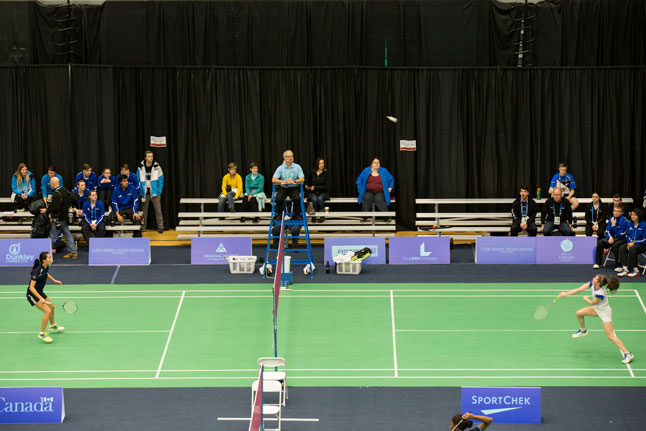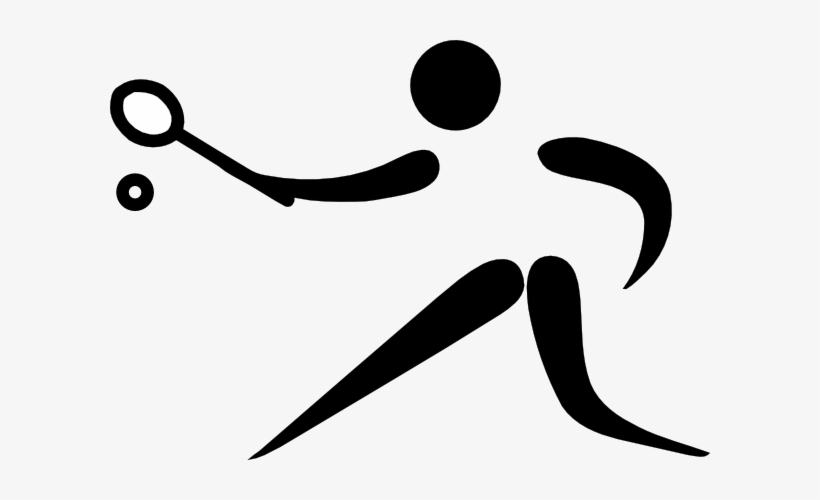Badminton Basics
Badminton basics that all beginners need to know. Badminton is a fun and thrilling sport that people of all ages and ability levels can enjoy and is a popular racquet sport that may be played solo or in couples. The goal of the game is to hit a shuttlecock over a high net and land it within the opponent’s court lines. Following are some badminton basics:
Equipment
The badminton racquet, which is similar to a tennis racquet but smaller and lighter, is the major piece of equipment in the sport. The racquet is built of lightweight materials like carbon fiber or aluminum to make it simple to swing. The shuttlecock, which is a tiny, lightweight device composed of feathers or synthetic materials, is also required. It is used to strike back and forth across the net and resembles a little cone with a rounded tip.
When playing badminton, you should dress comfortably and wear suitable footwear. Lightweight, breathable clothes will let you to move around the court more easily, and shoes with sufficient traction and support will keep you from slipping and sliding.
Check out our blogs on the best rackets and shuttlecocks that you can find in 2023.
Badminton Court
A badminton court is typically 20 feet wide by 44 feet long, with a net splitting the court in half. The court is often constructed with a firm surface, such as wood or synthetic materials, to allow for rapid movement and high grip. One of the most appealing aspects about badminton courts is that they can be put up practically anywhere, both indoors and outdoors. Because of its versatility, it is an excellent choice for people wishing to play for enjoyment or for those practicing for competitions.
Our solution to an at home badminton court? Here’s our blog on the best badminton nets of 2023 that you can buy!

Scoring
A match is usually played as the best of three games, with each game worth up to 21 points. If the score is tied at 20-20, the game is extended until one person or team wins by two points. When the shuttlecock lands on the opponent’s side of the court and they fail to return it before it reaches the ground, a point is awarded. If the serving player or team wins the rally, they receive a point and keep serving. The receiving player or team earns a point and takes over the serve if they win the rally.
The idea of the “serve” is one of the most distinctive aspects of badminton scoring. While playing singles, the server begins the game by serving from the right side of the court. The serve in doubles begins on the right side of the court, with the serving team swapping serves between players. It’s also worth noting that a mistake might result in the loss of a point. A fault occurs when a player’s body or racquet contacts the net, the shuttlecock lands outside of the court, or the shuttlecock fails to clear the net.
To summarize, badminton scoring is based on a point system, with each game worth up to 21 points. When the shuttlecock lands on the opponent’s side of the court and they fail to return it before it reaches the ground, points are awarded.

Serving
Serving is an important component of the game that can have a big influence on the outcome. Serving is the act of placing the shuttlecock into play at the start of each rally, and understanding the rules and tactics of serving is vital for playing the game efficiently.
While playing singles, the server begins the game by serving from the right side of the court. The serve must be struck below the waist and land diagonally across the net on the service court. The receiver must let the shuttlecock land inside the service court before returning it, and the server must not touch the shuttlecock again until it is returned by the receiver. The serve in doubles begins on the right side of the court, with the serving team swapping serves between players. The rules are the identical as in singles, except the recipient can choose to return the serve from any of the opposing players.
It is critical to remember that the server must always be in the proper stance before serving and must not change their feet until the shuttlecock has been struck. If the server makes a mistake, like as serving from the improper position or hitting the shuttlecock too high, the opposing team earns a point. In addition to serving regulations, there are many serving tactics that may be employed to gain an edge over the opponent. A high serve, for example, may be utilized to drive the opponent back to the back court, whilst a short serve can catch the opponent off guard and compel them to make a poor return.
Want to know more? Check out our blogs on Serving
Rules
The aim of badminton is to hit the shuttlecock over the net and onto the opponent’s side of the court without them returning it. When the shuttlecock lands on the opponent’s side of the court and they fail to return it before it reaches the ground, a point is awarded.
Badminton is divided into two types: singles and doubles. Each player competes on opposing sides of the court in singles play. Doubles is played with two players on each side of the court. The game begins with a serve, which must be struck below the waist and land in the service court diagonally across the net. Before serving, the server must start from the right position and wait for the receiver to be ready. If the serve is successful, the rally starts, with both players or teams attempting to keep the shuttlecock in play.
It is vital to emphasize that the shuttlecock cannot be grabbed or carried and must be struck with a racquet. If the shuttlecock strikes the net and lands on the opponent’s side, the rally continues. If, on the other hand, the shuttlecock hits the net and fails to cross or lands beyond the court, it is termed a mistake and the opponent scores a point. There are also distinct regulations in different regions of the court. For example, the service court is where the serve must land in order for the rally to begin. The rear boundary lines decide whether a shuttlecock is in or out of play, while the center line divides the court into two halves.
Don’t miss our blog on Badminton Rules












